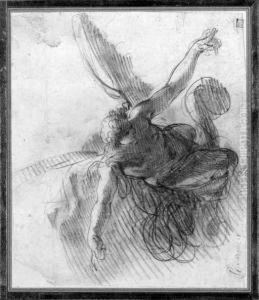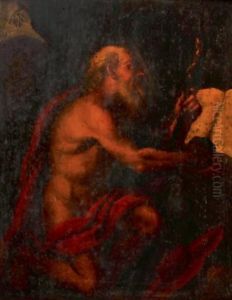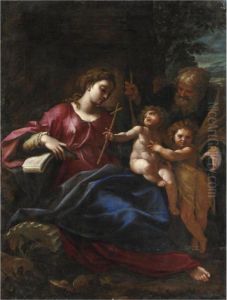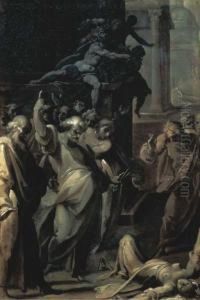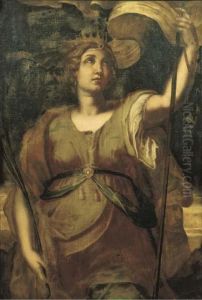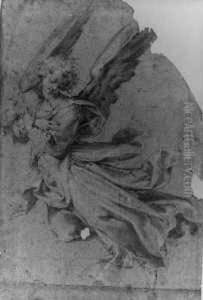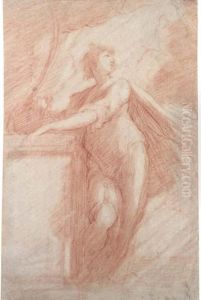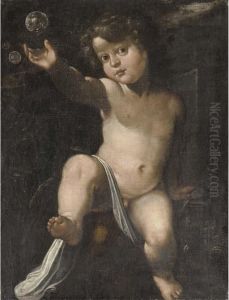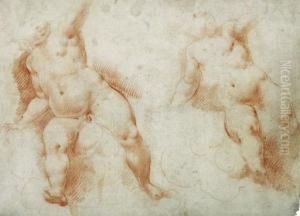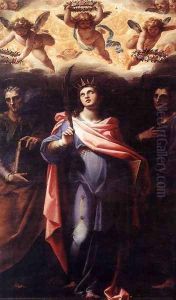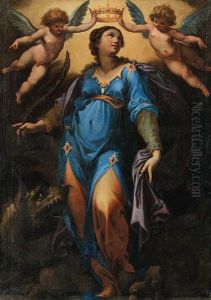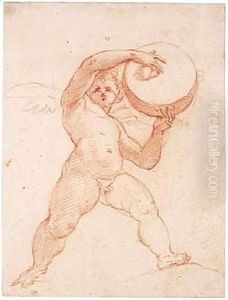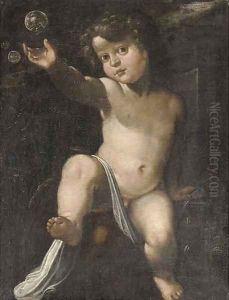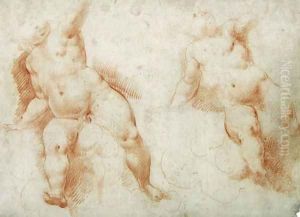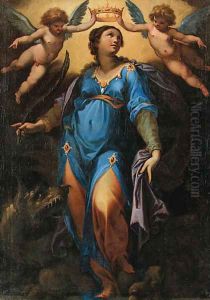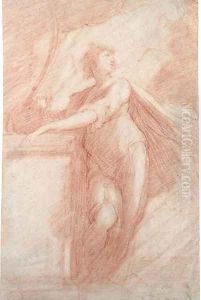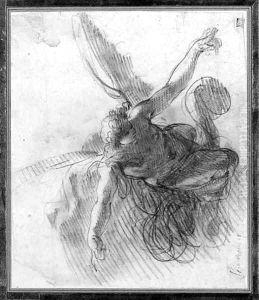Cristoforo Pomarancio (Roncalli) Paintings
Cristoforo Pomarancio, also known as Cristoforo Roncalli, was an Italian painter of the late-Renaissance period, active mainly in Rome and its surrounding regions. He was born in 1552 in Pomarance, a town in Tuscany, Italy, which is the origin of his nickname 'Pomarancio.' His more formal surname, Roncalli, is less commonly used in reference to his artistic identity.
Pomarancio received his early training in his native Tuscany before moving to Rome, where he became part of the vibrant artistic scene at the end of the 16th century. Once in Rome, he became associated with the mannerist style, which was characterized by elongated figures, exaggerated poses, and sometimes complex and ambiguous space. He was influenced by other Mannerist artists of the time, such as Girolamo Muziano and Niccolò Circignani.
One of his most significant works is the series of frescoes in the dome of the church of San Silvestro al Quirinale in Rome, completed around 1600. These frescoes demonstrate his mastery of large-scale compositions and his ability to create dramatic, emotional scenes. Pomarancio was also known for his work in the Cappella Paolina at Santa Maria Maggiore and for his frescoes in the Basilica of Loreto, which are considered some of his masterpieces.
In addition to frescoes, Pomarancio painted altarpieces and was involved in the decoration of several Roman palaces. His style evolved over time, showing the transition from Mannerism to the more naturalistic approach of the Baroque period. Despite the evolution of his style, his works consistently exhibit a strong use of color and a dynamic sense of movement.
Pomarancio's contribution to the art of the late Renaissance and early Baroque periods was significant, and his works can still be admired in various churches and locations throughout Italy. He passed away in 1626, leaving behind a legacy that would influence future generations of Italian painters.
